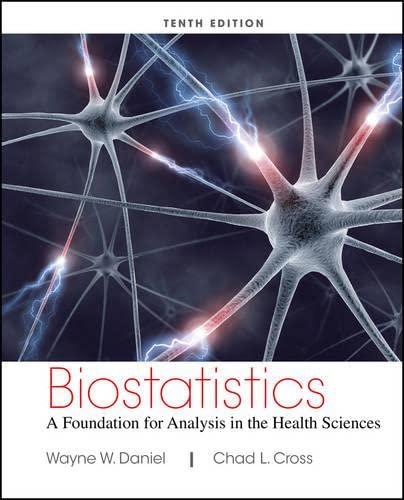David Holben (A-4) studied selenium levels in beef raised in a low selenium region of the United
Question:
David Holben (A-4) studied selenium levels in beef raised in a low selenium region of the United States. The goal of the study was to compare selenium levels in the region-raised beef to selenium levels in cooked venison, squirrel, and beef from other regions of the United States. The data below are the selenium levels calculated on a dry weight basis in mg=100 g for a sample of 53 region-raised cattle.
11.23 15.82 29.63 27.74 20.42 22.35 10.12 34.78 39.91 35.09 32.66 32.60 38.38 37.03 36.21 27.00 16.39 44.20 27.44 13.09 17.29 33.03 56.20 9.69 28.94 32.45 20.11 37.38 25.35 34.91 21.77 27.99 31.62 22.36 32.63 22.68 30.31 26.52 46.16 46.01 56.61 38.04 24.47 30.88 29.39 30.04 40.71 25.91 18.52 18.54 27.80 25.51 19.49 Source: Data provided courtesy of David Holben, Ph.D.
(a) Use these data to construct:
A frequency distribution A relative frequency distribution A cumulative frequency distribution A cumulative relative frequency distribution A histogram A frequency polygon
(b) Describe these data with respect to symmetry and skewness as discussed in Exercise 2.3.1, part h.
(c) How many of the measurements are greater than 40?
(d) What percentage of the measurements are less than 25?
Step by Step Answer:

Biostatistics A Foundation For Analysis In The Health Sciences
ISBN: 9781118302798
10th Edition
Authors: Wayne W. Daniel, Chad L. Cross






